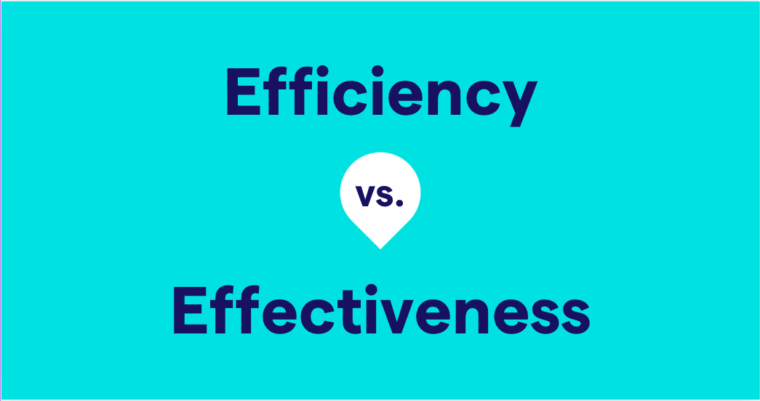
The terms former and latter are used to distinguish between two things mentioned in a sentence. The rules for using former versus latter in your writing are straightforward compared with other tricky words: Former directs us to the first of the two things, and latter directs us to the second (or last) of them.
To avoid confusion, don’t use former or latter when writing about more than two things.
We’ll go more in depth on how to use former and latter, and provide tips to remember the difference between the two.
What are the definitions of former and latter?
Former and latter are words that sound old-fashioned to some people, and indeed they are very old words.
Former means “the first of the two.” It comes from the Old English word “forma,” meaning “first or “earliest in time or order,” according to the Online Etymology Dictionary. The original definition goes back to the mid–12th century and changed around the late 1500s to its current meaning.
Former can also mean “previous” or be used to refer to a past state.
Latter has a similar history and comes from the Old English word lætra, or “late.” Its definition would also change at the latter half of the 1500s to “second of the two.”
Latter can also mean “situated or occurring nearer to the end of something than to the beginning,” according to the Oxford English Dictionary.
When to use former and latter
Former and latter are used to refer to one of two people, places, or things mentioned earlier in a sentence. Both are noun phrases used to stand in for a previously mentioned noun, so you have to place the definite article the before using either. Use former when you are referring to the first of the two things, and use latter when you are referring to the second of the two things.
You should not use former or latter if your list contains more than two things or when you’re using bullet lists. In these instances, it’s best to say the first or the third to refer to a particular choice.
Examples of former in a sentence
Here are five examples of how to use former in a sentence:
- The host gave us a choice between burgers and hot dogs. I chose the former.
- Gwen spent a lot of time deciding between Harvard and Yale, but in the end went with the former.
- The former boss was stricter than our current supervisor.
- I like hiking and swimming; the former is my favorite hobby.
- We can do this the easy way or the hard way. I’d pick the former if I were you.
Examples of latter in a sentence
Here are five examples of how to use latter in a sentence:
- If I had to choose between vanilla or chocolate ice cream, I’d go with the latter.
- We could either wait at the airport or get a rental car and drive the rest of the way. I prefer the latter option.
- The New York Yankees and New York Mets both have great stadiums, but the latter has better food options.
- Their first car was either going to be a hatchback or a pick-up truck. They went with the latter because it had more cargo space.
- I’m a bigger fan of the songs on the latter half of the album.
Former and latter as adjectives
Although they’re commonly used as noun phrases, former and latter can also be used as adjectives.
As an adjective, former can mean “previous” or refer to a past state. You may also hear someone refer to a team or organization’s former glory, which refers to a time when they were better than they are now.
I’m still good friends with my former coworkers.
Latter can be used as an adjective to refer to the later part of a period of time, usually toward the tail-end or second half. The third and fourth quarters of an NBA basketball game take part in the game’s latter half, and Thanksgiving and Christmas occur in the latter half of the year.
Former and latter as noun phrases
Former and latter are noun phrases, or a phrase that stands in for a previously mentioned noun. A noun phrase is used to provide further detail or clarification about a noun, and in this case the noun phrases former and latter are used to clarify which noun a person has picked.
Use the definite article the before a noun phrase to clarify the noun’s identity to the reader. Using an indefinite article, such as an, implies that the noun’s identity is unknown or is general.
We were stuck between the poodle and the golden retriever. In the end, our hearts told us to adopt the former.
The dessert options were cannolis or ice cream, and I picked the latter because I’m not much of a pastry person.
How to remember the difference between former and latter
There is an easy way to remember the difference between former and latter: Look at the letters they start with. Former starts with f, as in first, and latter starts with l, as in last.
Former vs. latter FAQs
What are the meanings of former and latter?
Former means “the first of the two.” Former can also mean “previous.” Latter means “second of the two.”
When should you use former vs. latter?
Use former when you are referring to the first of the two things, and use latter when you are referring to the second of the two things. Both are noun phrases used to stand in for a previously mentioned noun, so you have to place the definite article the before using either.
How do you remember the difference between former and latter?
Former, like the word first, begins with f—it refers to the first thing. Latter, like the word last, starts with l—it refers to the last thing.






